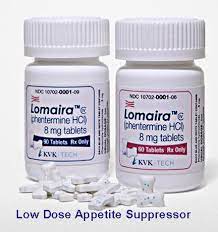Ozempic Diet Plan For Weight Loss
What is Ozempic diet plan

Ozempic, a brand name for semaglutide, plays a essential role in the managing of type 2 diabetes while also helping in weight loss. To attach the full potential of the ozempic diet plan routine, it is central to follow to a well-round and nutritionally perfect dietary plan.
Controlling diabetes isn’t easy, but a healthy diet can make a great difference. Ozempic, a medication often used for kinds of 2 diabetes and weight loss, works greatest when mutual with the perfect foods. In this article, we’ll explore the Ozempic diet plan in easy-to-understand terms. It’s all about making smart food choices to control blood sugar and feel better. Below, we elaborate on the key components of an Ozempic diet in greater detail:
Healthy Protein Sources:
- Incorporate skinless poultry such as chicken and turkey into your diet.
- Opt for lean cuts of beef and pork to minimize saturated fat intake.
- Fatty fish like salmon, mackerel, and sardines are super healthy because they have something called omega-3 fatty acids, which are really good for you.
- For vegetarians and vegans, tofu and tempeh provide high-quality plant-based protein.

Colorful Veggies for Health:
- Eat different kinds of veggies that aren’t too starchy:
- Leafy greens like spinach, kale, and arugula are full of good stuff for your body.
- You can also add zucchini, cucumber, and tomatoes because they’re good for you too.
Power-Packed Grains:
- Go for whole grains to give your body lasting energy and lots of fiber:
- Quinoa is a special grain because it has all the important amino acids.
- Other great choices are brown rice, whole wheat pasta, oats, barley, and farro because they’re high in fiber.
Healthy Fats:
- Eat fats that are good for your body to stay well:
- Avocado has heart-healthy fats that are really good.
- Extra virgin olive oil is also a great fat because it’s good for your heart and has antioxidants..
- Seeds like linseeds and chia seeds have fats that are good for you and lots of fiber.
- Fatty fish like salmon and mackerel have special fats called omega-3s that your body needs.
- You can enjoy nut butter sometimes, but don’t eat too much. It’s a tasty treat.

Low-Fat plan:
- If you have dairy, go for the low-fat or fat-free kind, like Greek yogurt.
- You can also have skim or low-fat milk to get calcium.
- If you can’t have daily routine dairy, try must almond milk or soy milk.
Fruits
- You can have fruits, but don’t eat too many.
- Berries are good because they have stuff that’s great for your body called antioxidants and fiber.
- Oranges and grapefruits are citrus fruits. They give you vitamin C and fiber.
- Apples and pears have lots of fiber and make for healthy and filling snacks.
Portion Control: The portion control is active to prevent overeating, which can badly affect on blood sugar levels and weight control.
Hydration: Staying well-hydrated is critical for inclusive health. Consume sufficient water throughout the day to support your body’s purposes.
Legumes: Include beans such as lentils, chickpeas, black beans, and kidney beans in your meals. They’re good sources of both protein and fiber.
Pros
1. Effective Blood Sugar Control: The Ozempic diet plan, when followed correctly, can help individuals with type 2 diabetes better manage their blood sugar levels. Ozempic itself works to lower blood sugar, and when combined with a balanced diet, it can lead to more stable glucose readings.
- Weight Management: Lots of people with type 2 diabetes have a hard time with their weight. Ozempic, when teamed up with a healthy diet, can help you lose weight or keep it fixed. That’s good for your overall health and taking care of your diabetes.
3. Heart Health: The diet have must focuses on foods that are proper for your heart, like lean proteins, healthy fats, and whole grains. This can make sure that your heart become healthier, which is extra essential if you have diabetes because it puts you at a higher risk for heart issues.
4. Sustainable: The Ozempic diet plan promotes a sustainable and long-term approach to eating. It encourages the consumption of whole, nutrient-dense foods rather than relying on restrictive or fad diets.
5. Professional Guidance: It is recommended to work closely with healthcare professionals or registered dietitians when following the Ozempic diet plan. This personalized support can ensure that the diet is tailored to individual health needs.
Cons
Medication Cost: Ozempic can be expensive, and it may not be covered fully by all insurance plans. This can make the overall diabetes management approach costlier.
Side Effects: Some individuals may experience side effects from Ozempic, including nausea, vomiting, or gastrointestinal discomfort. These side effects can affect appetite and dietary choices.
Complexity: Following a specific diet plan, especially one that requires meticulous attention to carbohydrate intake, can be challenging for some people. It may require significant adjustments to daily eating habits.
Personalization Required: The Ozempic diet plan is not one-size-fits-all. What works for one person may not work for another, so it requires customization based on individual health factors and preferences.
Monitoring and Discipline: Managing blood sugar effectively with this diet plan requires consistent monitoring and discipline. This may involve regular blood sugar testing, portion control, and adherence to the dietary guidelines.
Conclusion
The Ozempic diet plan has many pluses for people with type 2 diabetes. It helps manage blood sugar, manage weight, and keeps your heart become healthy. But it’s not without its trials. Ozempic can be more expensive, and it might cause some side effects. Plus, the diet needs to be modified for you. It’s very essential to concern with your doctor team to see if this plan is best for you and get more tips on how to do it well.






